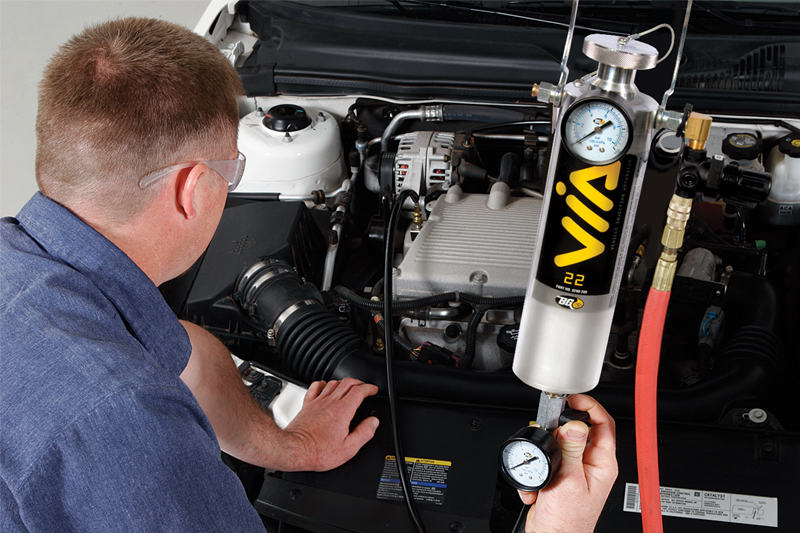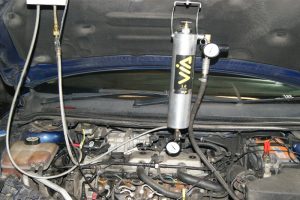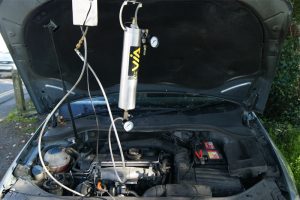
VW Passat 2.0 D; Black Smoke Emitted and Misfire on Idle.
I was recently presented with a VW Passat 2.0 D that had 225K miles on the clock and was fitted with a Bosch EDC 1.5 system. The main symptoms were hesitation and misfire on idle and I was informed that both the turbo and EGR valve had been replaced six months previous.
Armed with those facts my first course of action was to check things over with the scan tool and look for any DTCs. I found none that were of any interest so I then took the car for a test drive. In this instance I decided to leave my scan tool connected, and I didn’t have to drive too far to notice that the performance was very poor with a lot of black smoke emitted at the same time.
The investigation begins
Back in the workshop I started my investigation, with a few things to take into account. Firstly the engine was misfiring on idle, but when on a normal running temperature it appeared to have few issues. The clouds of black smoke and hesitation under load pointed to a potential injector issue so I opted to carry out a quick back leak test. The results of the test concluded that the injectors weren’t the cause of the problem as the return flow was well within the specified limit on both low and fast idle.
At this point the engine had been running for around 30 minutes and no misfires had taken place. I did, however, notice a smell around the engine bay and, with all other options exhausted, it was time to consider a different approach.
The systems on this particular car were very similar to a Vauxhall Corsa 1.3 D that had previously visited my workshop. Using this experience I removed the inlet pipes and found that the EGR valve had small passages (these engines clog up very easily at low mileage (below 20,000) so be on your guard). This helped me to finally work out what the problem was: the intake system was contaminated with carbon and debris. I discussed my findings with the owner and explained that having to dismantle all the related parts would take hours. I then suggested a cost-effective alternative…
BG to the rescue
As a regular reader of trade magazines and online forums I’d noticed that a great deal has been said and written about the fuel and induction systems cleaner from BG Products, so now was the chance to put it to the test. After contacting BG directly, the company agreed to send out a rep, Craig, to introduce and demonstrate the process to me. He began by adding BG EPR (Engine Performance Restoration PN 109) to the existing oil and BG 244 to the fuel before setting the equipment up. The BG Diesel Air Intake Tool
container was filled with the PN 255E diesel air induction system cleaner and the engine was turned on to start the process. Craig said that this approach restores three critical areas of a diesel engine: air flow, atomisation of the fuel injector and compression.
He explained that it would take around 45 minutes for the process to be completed, and it wasn’t long before the engine emitted a cloud of contamination from the exhaust. When the process was finished the oil and filter was changed and a BG oil conditioner was added for protection, with Craig advising that this would be beneficial over a long period of time. We were now ready for the moment of truth…
After taking the car out for another test drive I can honestly say that I noticed a massive difference almost instantly. The hesitation had disappeared and, although some emission was still visible (because the chemical reaction was still taking place), this had resolved itself by the time I’d driven ten miles or so.
In the space of 45 minutes, the Passat was completely transformed from a non-starter to a well performing vehicle.
A missed opportunity?
Bearing in mind that this problem Passat was referred to me by another workshop, I’d guess that other garages out there are missing similar opportunities. When you consider the cost and time for both the workshop and the customer, it’s a no-brainer to give a solution like this a go.
Since the time of writing I’ve acquired the necessary equipment, along with a supply of chemicals, and will be back with an update on my findings later in the year.









